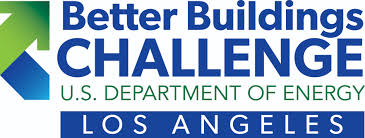Share This
Related Posts
Tags
Better Buildings
By Joel Nelson on Jul 19, 2018 in Energy, News
A recent report presented by Better Buildings®, an initiative of the U.S. Department of Energy, and Global Real Estate Sustainability Benchmark (GRESB), an association dedicated to assessing and improving the sustainability performance of real estate assets, offered insight into the impact of sustainability certifications on commercial properties’ business performance in Los Angeles.
U.S. Department of Energy, and Global Real Estate Sustainability Benchmark (GRESB), an association dedicated to assessing and improving the sustainability performance of real estate assets, offered insight into the impact of sustainability certifications on commercial properties’ business performance in Los Angeles.
David Hodgins, executive director of Los Angeles Better Buildings Challenge, presented findings showing that Class B buildings in Los Angeles with ENERGY STAR scores of 75+ achieved significantly higher occupancy rates and rent per square foot than non-certified Class A buildings there. Better Buildings’ findings were based on data from 263 ENERGY STAR-certified buildings and 526 LEED Certified buildings that illustrated the impact of ENERGY STAR benchmarking and certification on building occupancy and rental income.
Co-presenter Dan Winters, head of Americas at GRESB, indicated the numbers are similar in other cities where studies have been done.
Among the other Los Angeles findings:
- The average occupancy for ENERY STAR-certified buildings is 90%, vs the 84% current overall occupancy rate, which generates substantial gross annual rent increases
- The gross current asking rent per square foot (PSF) for ENERGY STAR buildings is $2.15, vs the current asking rent of $2 which also generates substantial gross annual rent improvements
Los Angeles is benchmarking its most energy-intensive facilities and has pledged to reduce the energy intensity for 30 million square feet of city-owned and private buildings by 20% by 2020. More than 25 owners of large commercial buildings joined the challenge and report their results annually to help others save money and energy.
The Los Angeles Existing Buildings Energy and Water Efficiency ordinance (EBEWE) has made energy efficiency a high priority in the city. This focus is paying off in multiple ways. The city ranked No. 1 in office space on the U.S. Environmental Protection Agency’s 2018 Top Cities list, with 716 ENERGY STAR certified buildings having reduced CO2 emissions by 428,000 metric tons and saved an estimated $229 million in energy costs. Washington, D.C., Dallas, Atlanta and New York round out the top five metro areas with the most ENERGY STAR certified buildings.
Given the significant impact on revenues through rent and occupancy, it’s easy to understand why property investors and owners are focusing on ways to measure and enhance their energy and water performance. According to GRESB, “Building energy technology will need to complement other related policies and initiatives to reduce building-related energy use and carbon emissions. One solution in particular is as promising as it is simple: implement energy performance benchmarking and improve data transparency.”
One technology that’s in line with GRESB’s recommendations is Yardi Utility Expense Management (UEM), an element of the Yardi Smart Energy Suite that tracks and receives cost and consumption data directly from utility companies, then processes, validates, stores and pays utility invoices. In addition to automating payable processing and capturing valuable data, exception handling, rate and tariff auditing and faster processing times can drastically reduce utility costs and late fees. Detailed reporting from Yardi Utility Expense Management allows property owners and managers to view benchmarking and trends in cost and consumption from individual meters up to buildings and portfolios. As an ENERGY STAR Partner, Yardi can also send utility data into ENERGY STAR Portfolio Manager as required to meet benchmarking regulations.
“GRESB and other sustainability reporting programs recommend that building managers load energy data from their systems to ENERGY STAR. That will make Yardi Utility Expense Management even more relevant to the ongoing energy savings effort,” says Randy Moss, a consultant on the Yardi Energy team.
Watch a video to learn more about Yardi Utility Expense Management.
